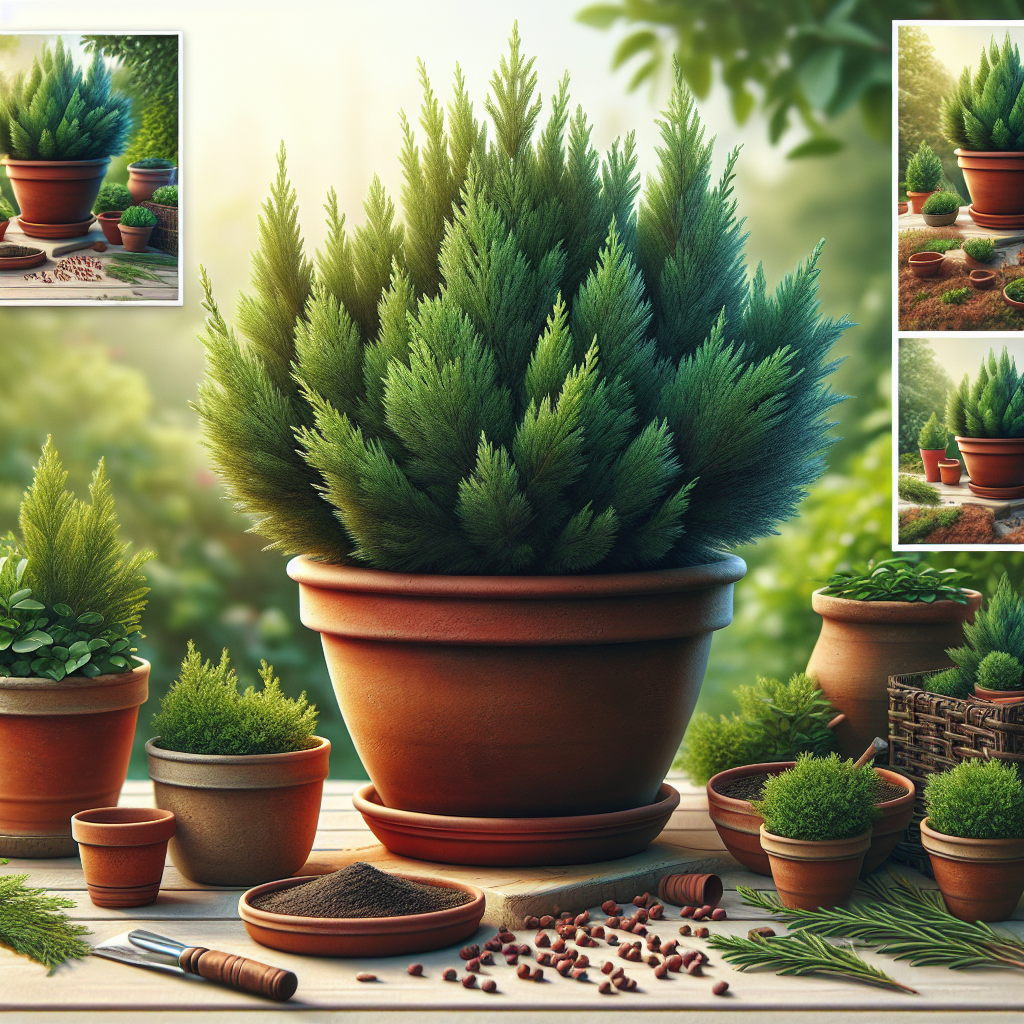Junipers are a popular choice for bonsai enthusiasts due to their hardiness, beautiful foliage, and ease of care. However, growing junipers in pots can present unique challenges that require special attention and care. In this article, we will uncover the secret to thriving junipers in pots and provide you with essential care tips to ensure your bonsai trees flourish and thrive.
Growing junipers in pots can be a rewarding experience, but it requires a different approach than planting them in the ground. By understanding the specific needs of junipers and providing them with the right care, you can create a stunning display of bonsai trees that will bring beauty and tranquility to your home or garden. So let’s dive into the world of junipers in pots and unlock the secrets to their success.
**Choosing the Right Pot**
One of the most crucial factors in successfully growing junipers in pots is selecting the right container. The pot you choose should have adequate drainage holes to prevent water from pooling at the bottom, which can lead to root rot. Additionally, choose a pot that is slightly larger than the root ball of your juniper to allow room for growth.
When selecting a pot for your juniper, consider the material as well. Clay pots are ideal for junipers as they allow for better airflow and drainage than plastic containers. Additionally, clay pots help regulate soil temperature, which is important for ensuring healthy root development.
**Soil Mixture**
The soil mixture you use for your juniper bonsai is crucial for its overall health and growth. Junipers prefer well-draining soil that retains moisture without becoming waterlogged. A common soil mix for junipers consists of equal parts of akadama, pumice, and lava rock.
When repotting your juniper bonsai, be sure to prune any circling roots and trim back excessive growth to promote new root development. Repotting should be done every two to three years to prevent overcrowding and ensure your juniper has enough space to grow.
**Watering**
Proper watering is essential for maintaining healthy junipers in pots. Junipers prefer slightly moist soil but can suffer if overwatered. To determine when your bonsai needs water, stick your finger into the soil about an inch deep – if it feels dry, it’s time to water.
During hot weather or when your juniper is actively growing, you may need to water more frequently. However, be cautious not to water too much as this can lead to root rot. It’s best to water deeply but infrequently rather than shallowly on a daily basis.
**Sunlight**
Junipers thrive in full sun conditions and require at least six hours of direct sunlight each day. Place your juniper bonsai where it will receive ample sunlight throughout the day – this will help promote healthy growth and vibrant foliage.
If you’re keeping your juniper indoors, place it near a sunny window where it can receive plenty of sunlight or use artificial grow lights to supplement natural light. Rotate your bonsai regularly so all sides receive equal light exposure.
**Pruning**
Regular pruning is essential for maintaining the shape and health of your juniper bonsai tree. Prune back new growth in spring or early summer using sharp scissors or shears – be sure to remove any dead or yellowing branches as well.
When pruning branches on your juniper bonsai tree, make clean cuts just above a set of healthy leaves or buds – this will encourage new growth and help maintain its shape over time. Avoid cutting back more than one-third of the total foliage at once.
**Fertilizing**
Fertilizing is important for providing your juniper bonsai with essential nutrients needed for healthy growth and development. Use a balanced liquid fertilizer diluted to half strength every two weeks during the growing season (spring through fall).
Avoid fertilizing during winter months when your plant is dormant as this can stimulate new growth that may be susceptible to cold temperatures. Be mindful not to over-fertilize as this can lead to nutrient imbalances or burn roots – follow package instructions carefully.
In conclusion,
Growing thriving Junipers in pots requires careful attention paid towards choosing proper containers with adequate drainage holes; using well-draining soil mixes comprising equal parts akadama-pumice-lava rock mix; watering deeply but infrequently only when needed; exposing them fully under direct sunlight while also being mindful about indoor conditions involving proper lighting techniques such as placing near sunny windows or utilizing artificial grow lights; regularly pruning branches especially during spring/summer periods; applying balanced liquid fertilizers sparingly throughout seasons except winter months.
FAQ
Q: How often should I repot my Juniper bonsai?
A: Repotting should be done every two to three years
Q: Can I keep my Juniper indoors?
A: Yes, but make sure it receives ample sunlight either through windows or artificial grow lights
Q: How do I know when my Juniper needs water?
A: Stick your finger into the soil about an inch deep – if it feels dry then it’s time to water













